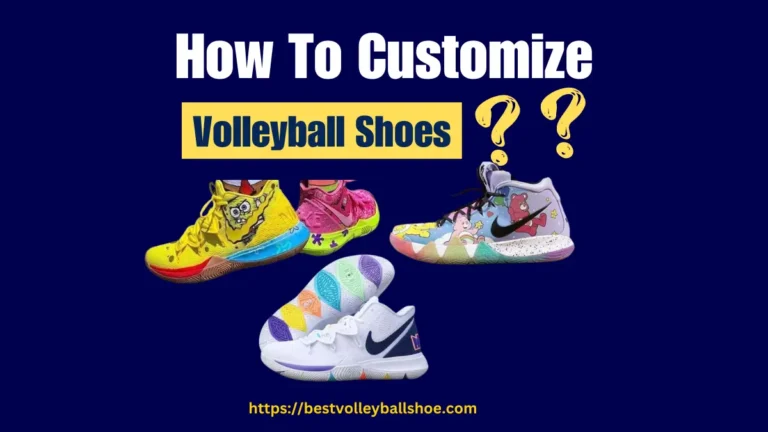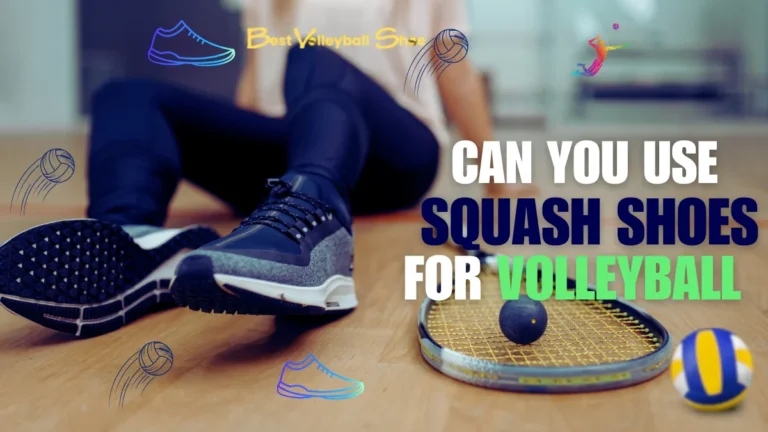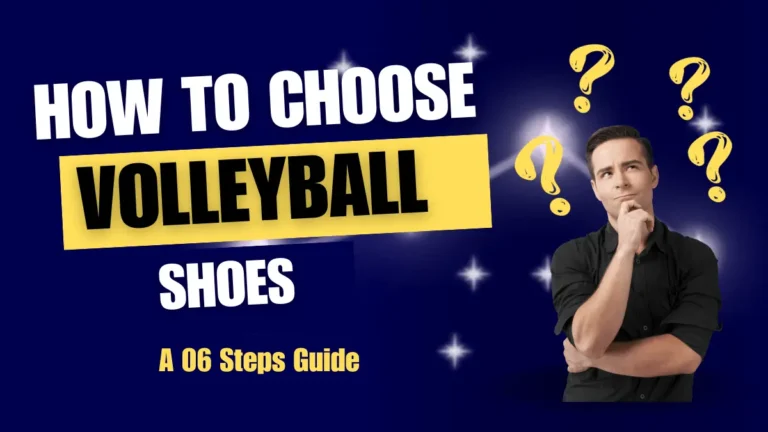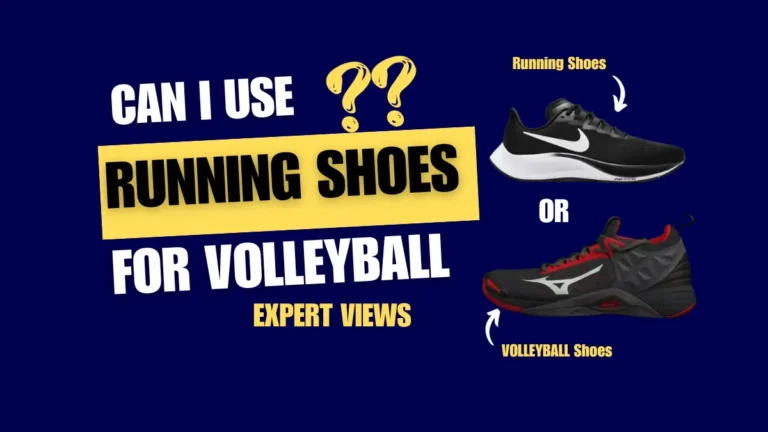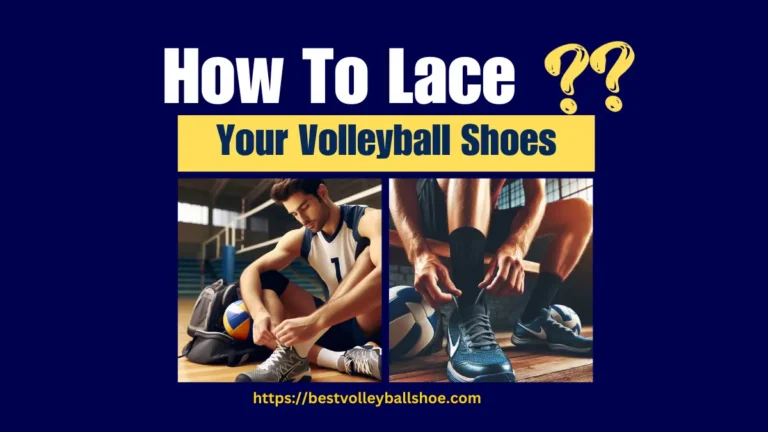Know the Difference: How Volleyball Shoes Stand Out in Looks and Function

Puzzling over the exact looks of the perfect volleyball shoe pair or getting confused about what makes volleyball shoes different from others is a normal vibe, you’re not alone in this.
Let’s clear up that confusion together, let me take you deep into the nitty-gritty of their unique looks and features. Stick around, and you’ll spot the difference in no time!
So let’s begin with what makes volleyball shoes different?
What Do Volleyball Shoes Look Like
Focusing purely on the visual aspects, volleyball shoes differentiate themselves with a few standout features that catch the eye:
What Makes Volleyball Shoes Different
For a layman, volleyball shoes are similar to other sneakers and court shoes. In fact, this is not the case as these shoes are designed and equipped with special features to meet the game requirement and ensure optimum performance, and injury prevention for volleyball players.
Here is a brief description of the key features of volleyball shoes.
| Feature | Volleyball Shoes | General Athletic Shoes |
| Sole Design | Gum rubber soles for superior grip on indoor courts. | Varied materials, not always optimized for indoor grip. |
| Cushioning | Enhanced cushioning at forefoot and heel for jump support. | General cushioning, may not focus on jump impact. |
| Weight | Lightweight to support quick movements and jumps. | Weight varies, not always designed for agility. |
| Stability | Lateral support for side-to-side movements. | General support, may lack volleyball-specific stability. |
| Flexibility | Designed for quick, dynamic movements. | Flexibility varies, not always tailored to specific sports. |
| Breathability | High breathability to keep feet cool during intense play. | Typically one style, is not always focused on ankle support. |
| Ankle Support | Options for both low and high tops, based on player preference. | Typically one style, not always focused on ankle support. |
let’s dive deeper into the functions of each feature.
Traction and Sole Design

Traction is of prime importance in the volleyball court. A traction-less shoes mean you’re skating on the ice.
Cushioning and Shock Absorption
DO YOU KNOW?
According to a study, ankle sprain is the most prevalent injury in volleyball players with 31.9% followed by knee joint (17.38%), fingers (13.44%), lower back (12.38%), shoulder trauma (12.18%), and hand injury (6.97%). The other injuries account for 5.25%. Importantly, most of the injuries take place during spiking and blocking.
Weight, Flexibility, and Support
Breathability for Enhanced Comfort
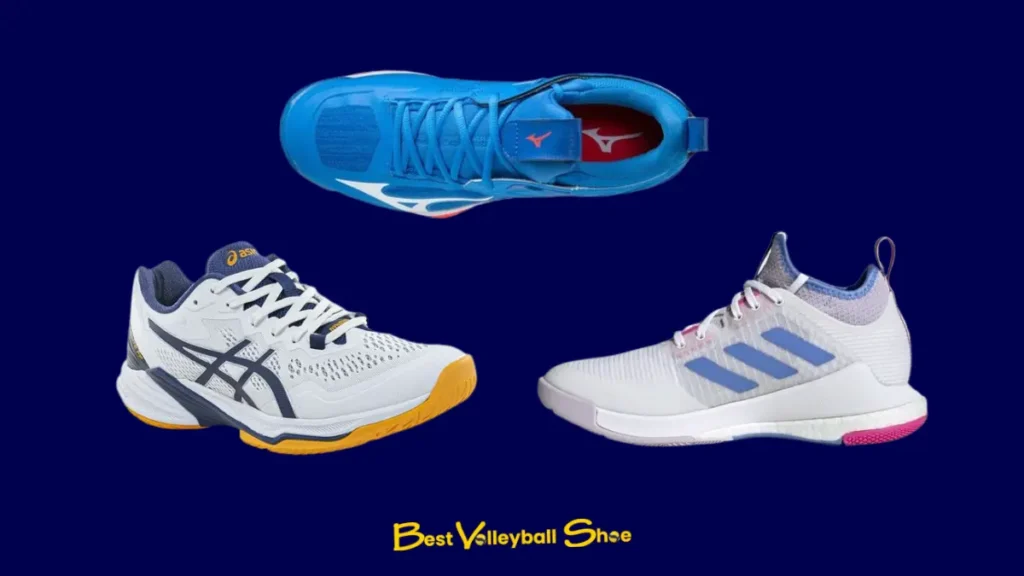
What to Look for in a Volleyball Shoes
Identifying Your Needs
Foot Type: Know if you have flat feet, high arches, or something in between. Flat feet require different support than high arches, affecting comfort and performance on the court. This helps to choose shoes with the right support.
Personal Preferences: Think about what you like. Maybe you want shoes that feel super light or ones that wrap around your feet snugly. Your comfort matters a lot. Whether you value a lightweight feel, snug fit, or style, choosing shoes that meet your likes ensures satisfaction and confidence during play.
Playing Position: Your role in the team influences your shoe needs. Setters prioritize agility, hitters need cushioning for jumps, and liberos require traction for quick movements, highlighting how different positions demand specific shoe features.
The Fitting Process
To make sure that what’s the perfect fit for your foot type, follow the given steps:
- Try Them On: Always try on volleyball shoes with the socks you’ll play in. This ensures the fit is just right.
- Move Around: Walk, jump, and even mimic volleyball moves in the store. You want to feel how the shoes handle actions you’ll do in a game.
- Check the Fit: Make sure there’s a thumb’s width between your longest toe and the end of the shoe. They should feel snug but not tight, with no heel slipping.
Where to Buy
- Online Stores: Convenient, often with more options and reviews. Just make sure there’s a good return policy.
- Physical Stores: Best for trying on different pairs and getting advice. You can feel what works.
Avoiding Common Selection Errors
Quality Over Looks
Don’t pick shoes just because they look good. The best volleyball shoes offer the right support, cushioning, and grip for the game. Quality helps your performance and safety.
The Right Shoe for Your Volleyball Journey
Choose shoes that match your level of play and position. Beginners might need different shoes than advanced players. The right pair supports your growth and playing style.
Advanced Considerations for Competitive Players
Volleyball is in your blood? You started playing it at 4? It’s been 20 years? Are you a national player? There’s some secret sauce for you, you’d love it. I’m going to discuss some pro-level considerations that you can look for in your volleyball shoes.
Impact of Shoe Technology on Performance
- New materials make shoes lighter and stronger, enhancing agility.
- Innovations like adaptive cushioning improve shock absorption.
- Advanced sole designs offer better grip for quick movements.
Latest Innovations in Volleyball Footwear
- Technologies such as energy-returning soles boost performance.
- Ventilation systems keep feet cool under competitive pressure.
- Durable yet flexible materials withstand rigorous play.
Customization and Personalization
- Custom-fit options ensure shoes match individual foot profiles.
- Players can select materials and designs for personal comfort.
- Style customization allows athletes to express their personality.
Tailoring Shoes to Individual Needs
- Special insoles and padding address specific support needs.
- Lacing systems and shoe structures can be adjusted for better fit.
- Personalized wear patterns are considered for optimal performance.
Here’s a summed-up version of the stuff discussed above:
| Aspect | Pros | Cons |
| Online Shopping | Wide selection, often better prices, convenient. | Can’t try before you buy, return process can be a hassle. |
| In-Store Shopping | Try on shoes for fit, immediate purchase, expert advice available. | Limited selection compared to online, might be more expensive. |
| Lightweight Design | Enhances agility and reduces fatigue. | May offer less protection and support than heavier shoes. |
| Gum Rubber Soles | Superior grip on indoor courts. | May wear down quickly if used on rough surfaces. |
| Enhanced Cushioning | Better shock absorption, comfort, and injury prevention. | Can make shoes slightly heavier, affecting quick movements. |
| High Breathability | Keeps feet cooler and reduces sweat. | Highly breathable materials may offer less durability. |
| Choosing Based on Looks | Attractive shoes may boost confidence and enjoyment. | Many compromise on performance, fit, and durability. |
Conclusion
Got it, let’s keep it simple and straight. We’ve talked a lot about volleyball shoes, right? From their cool looks to why they’re different from other sports shoes. It’s all about finding that pair that not only looks good but also gives you the boost you need on the court. So, when you’re picking out your next pair, remember it’s about comfort, support, and yes, a bit of style too. Here’s to stepping up your game with the right shoes. Cheers to playing your best!
Frequently Asked Questions (FAQs)
What’s the difference between volleyball shoes and regular sneakers?
Volleyball shoes are specifically designed for the demands of the sport, including materials that enhance grip and stability on the court, which regular sneakers may not offer.
Can I use volleyball shoes for gym workouts or weight training?
While they’re optimized for the court, many players find their volleyball shoes comfortable for general gym activities, though they may not be ideal for heavy weightlifting.
Are there any volleyball shoes designed specifically for outdoor sand volleyball?
Sand volleyball typically requires different footwear, like sand socks or barefoot play, since traditional indoor volleyball shoes are designed for court surfaces.
Is there a difference in volleyball shoes for beginners versus advanced players?
While the basic design principles remain the same, advanced players might look for shoes with specific performance features tailored to their play style.
Can volleyball shoes help with knee pain?
Good volleyball shoes with proper cushioning can help reduce the impact on your knees, but it’s important to consult with a healthcare professional for persistent pain.
Are there volleyball shoes available for kids or only adult sizes?
Many brands offer volleyball shoes in youth sizes, designed with the same attention to detail and performance features as adult models.
